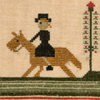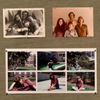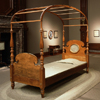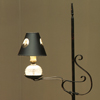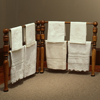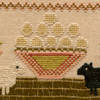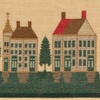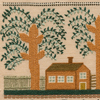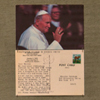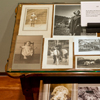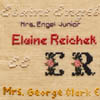Given the inquiry into issues around history, identity, and representation in my work, it was not illogical that Susan Goodman from The Jewish Museum, New York, visited my studio in 1992 and asked, “Done anything Jewish?” What was startling, at least to me, was the fact that I had never even considered working with any issues around Jewish identity. When Susan left I filed “Jewish” in the catacombs of the psyche and went on reading about Native Americans, Fuegians, and Ireland’s Easter Rebellion. Of course, the idea could not stay entombed, and the result was A Postcolonial Kinderhood, an installation re-creating my childhood bedroom.
I was brought up in Brooklyn in a large Dutch Colonial house full of reproduction Early American furniture. There was a great deal of silence surrounding our family’s Jewishness. My father was in the furniture business, and there were many conversations about good taste and bad taste. In the re-creation of my bedroom, I explore decor as a means of assimilating and Americanizing the family. For us it was a way of “passing” and of connecting to a more desirable past. The bedroom installation was dimly lit and the furniture (all from Ethan Allen’s 1776 collection) was reduced slightly in size, creating an environment that I hope felt melancholy, unsettled, and out of kilter.
In addition to the furnishings, the olive-gray walls were lined with embroideries based on American samplers. But instead of the usual Christian homilies or the historical quotes I’d used in previous exhibitions, I embroidered these samplers with quotations from my Jewish family and friends, gathered at family occasions. (In my family this meant Thanksgiving, Christmas, and the Fourth of July). I became an anthropologist of my own culture and discovered the same kind of shifting border territory between cultural and social ethos that I had been exploring from a safe distance in my studies of nineteenth-century travel and science. The life of a middle-class Jewish girl from Brooklyn, I saw, encompassed the same sorts of ambiguities of belonging that the cultural theoretician Homi Bhabha has ascribed to “cultures ‘in-between’”—those “produced in the articulation of cultural differences.”
|



